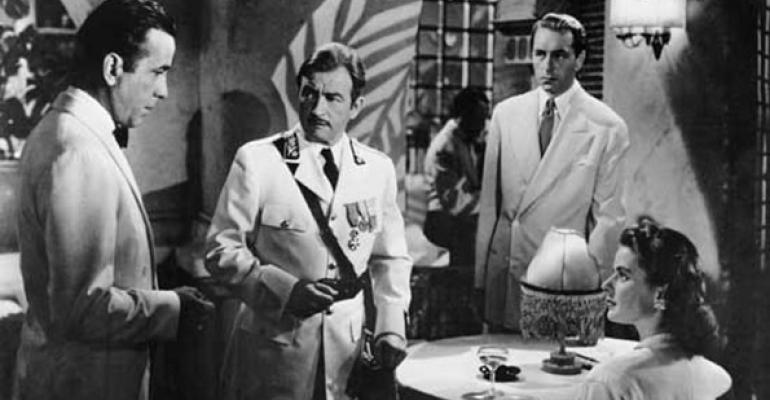The Protecting Americans from Tax Hikes (PATH) Act of 2015 (who names these things?) makes “permanent” retroactive for 2015 these charitable provisions that expired in 2014: direct tax-free charitable individual retirement account transfers; S Corporations making contributions; food inventory contributions—expanded; qualified conservation contributions—expanded; and contributions to agricultural-research organizations—new.
But I’d like to bring your attention to a brand-new law that on its face appears favorable to taxpayers:
“PATH ‘15 “SEC. 344. CLARIFICATION OF VALUATION RULE FOR EARLY TERMINATION OF CERTAIN CHARITABLE REMAINDER UNITRUSTS
(a) IN GENERAL.— [IRC] Section 664(e) is amended—
(1) by adding at the end the following: ‘In the case of the early termination of a trust which is a charitable remainder unitrust by reason of subsection (d)(3), the valuation of interests in such trust for purposes of this section shall be made under rules similar to the rules of the preceding sentence.’, and
(2) by striking ‘FOR PURPOSES OF CHARITABLE CONTRIBUTION’ in the heading thereof and inserting ‘OF INTERESTS’.
(b) EFFECTIVE DATE.—The amendment made by this section shall apply to terminations of trusts occurring after the date of the enactment of this Act.”
Translation: The “clarification” provides that the value of a beneficiary’s life (or term) interest on the early termination of a net income with makeup charitable remainder unitrust (NIMCRUT) or net income with no makeup charitable remainder unitrust (NICRUT) is to be determined the same way as if the trust were a standard (fixed percentage) charitable remainder unitrust (STANCRUT).
The Internal Revenue Code amendment and the Joint Committee’s explanation don’t tell why this “clarification” is important to some trust beneficiaries who want to terminate their trusts before the end of the specified term.
Why Are Trusts Terminated Early?
Here are some reasons.
• A donor gives his remaining life interest to the charitable remainder organization. Private letter rulings on this termination method (except for one earlier outlier) haven’t required a special way of valuing the donor’s life interest in a NIMCRUT or NICRUT when valuing the donor’s charitable contribution for the then value of his life interest.1
• Dividing the trust assets between the life beneficiary and the charitable remainder organization based on the value of their then respective interests. PLRs hold that the value of the assets to be received by a NIMCRUT life beneficiary is lower than the value he would receive had the trust been a STANCRUT. This is the case when the IRC Section 7520 rate is lower than the percentage payout provided in the NIMCRUT (same rule would apply to a NICRUT).2
Amendment Eliminates Low Valuation Issue
One doesn’t always know who’s is behind a law’s modification, repeal or enactment. No big guess here. The motivating forces are some life beneficiaries of existing large NIMCRUTs who wish to terminate their trusts now by dividing the trust assets with the charitable remainder organization. But they don’t want their life interests to be low valued as provided in earlier PLRs.
Caution. A prudent buyer wouldn’t buy a life interest in a NIMCRUT or NICRUT paying the STANCRUT valuation amount if he would receive only the value as determined by the IRS in PLRs when the IRC Section 7520 rate is lower the unitrust payout amount provided in the trust. Generally, the charity will benefit by having the trust continue if no or little payments have been paid and will be paid to the life-income beneficiary.
So should a charitable remainder organization agree to terminate a NIMCRUT or NICRUT when the life beneficiary will receive assets equal to a STANCRUT valuation? Attorneys General (AGs) in some states must agree to an early termination. Despite the IRC’s “clarification” of the valuation rules, a state’s AG could object to an early termination to protect the charity. And the charity’s board, officers and employees might not (shouldn’t?) approve an early termination (based on a STANCRUT instead of a NIMCRUT valuation) because of the potential adverse financial consequences to the charity.
In the film Casataxa, Captain Louis Renault shuts down Rick’s Place and Tax Shelter: “I’m shocked, shocked to find that ‘self-dealing’ is going on here.”
Effective Date
The amendment applies to terminations of trusts starting Dec. 19, 2015. Query: If this is a “clarification” rather than a new rule, why is it effective prospectively and not retroactively?
Parthian Shot
A charitable remainder trust of any kind—charitable remainder annuity trust, STANCRUT, NIMCRUT, NICRUT —can also be terminated early when the life beneficiary and the charitable remainder organization sell their respective life interests to a third party. The NICRUT, NIMCRUT issue hasn’t been raised in this situation. But the Internal Revenue Service hasn’t been concerned about valuing the respective interests, but rather about shutting down plans designed to avoid or minimize capital gains on the sale of the life beneficiary’s interest to a third party.3
Endnotes
- Private Letter Rulings 200124010 (March 14, 2001) and 200140027 (June 29, 2001).
- PLRs 200725044 (released June 22, 2007) and 201325018.
- Treasury Regulations Section 1.6111-4.
© Conrad Teitell 2016. This is not intended as legal, tax, financial or other advice. So, check with your adviser on how the rules apply to you.






